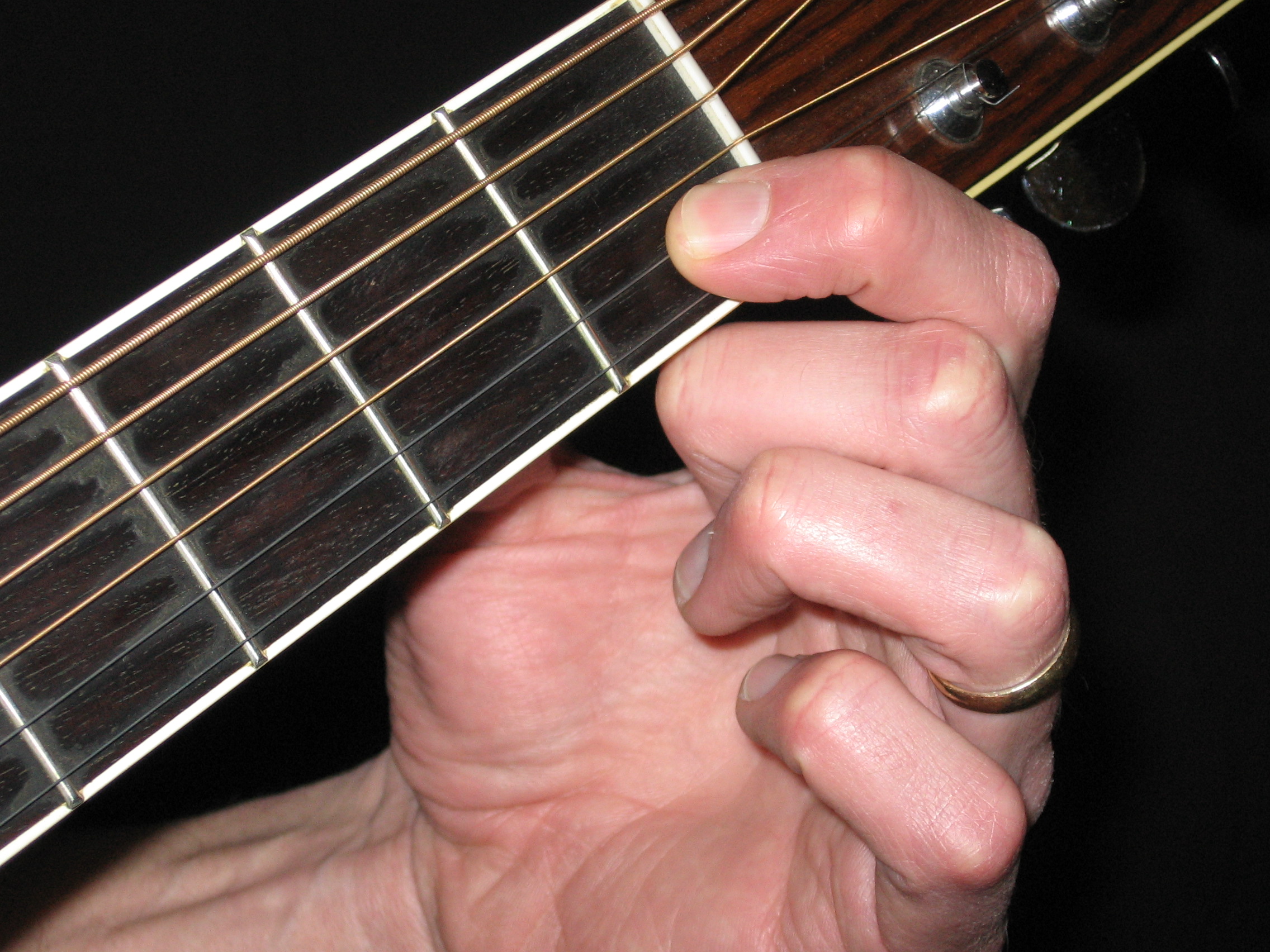Guitar Chord Practice—How To Make Your Guitar Chords Sound Better
As you learn guitar chords, it is important to know that practicing chords and chord changes on the guitar requires several different guitar chord practice approaches in order to master all the skills needed. Initially, you must learn guitar chords and memorize the fingerings, practice changing from chord to chord, and learn to get all the notes within each chord sounding clearly. While there is some overlap in the skills needed for each chord practice technique, today we are going to focus on learning a practice method that will enable you to practice your guitar chords in order to get all the notes sounding clearly—this is the key to getting a great sound when playing guitar chords.
Let’s use the C major chord. Here is the chord fingering:
| C |
 |
| 3 2 1 |
There are two specific problems we are going to fix today. The first chord problem is notes that sound “buzzy”—you can hear the notes you are fingering but some may have a “tinny” sound.
Most guitarists try to solve this problem by trying to squeeze the chord harder with their fret hand fingers as they go through their guitar chord practice. Actually, the problem is usually caused by the location of the finger on the fret of the note that is not sounding correctly.
To fix this annoying “tinny” sound, you want to try to place your fingers as close as possible behind the fret wire. Look at the picture below of this single on the second string, first fret note from the C chord. Notice how far behind that fret the finger is?

Even if I squeeze the note harder, it is still difficult to get a clear sound out of the note. This is caused by the note not being firmly pressed against the fret wire. The solution is to slide your finger forward until it is just behind the fret—like this:

Once your finger is close behind the fret, you will not need to press any harder to get the note to sound clearly. In fact, the closer you are to the fret, the less pressure you need to use.
Here are two examples applied to the entire C chord fingering. The first shows the entire fret hand too far back from the fret wires:

Now, with the fret hand fingers moved up close to the fret wires:

The difference in hand positioning is very small but it makes a massive difference in the sound of the chord. Be aware of this as you work through your guitar chord practice and you will quickly learn to eliminate buzzy sounding notes simply by making sure your fingers are always as close behind the frets as possible.
The second major problem when guitarists are playing guitar chords involves notes in the chord being completely muted and not sounding at all. Most of the time, this problem is caused by the fret hand fingers leaning into and touching strings other than the ones that are being played by those fingers.
The number one cause of this problem when playing guitar chords is a poor fret hand position that doesn’t allow the fingers to contact the strings at a direct perpendicular angle to the fretboard—the fingers “lean” and approach the chord from too much of a side angle.
Here is what happens with poor fret hand position:

Notice how the palm of the fret hand is touching the back of the guitar neck. This causes the fingers to approach the notes they are fretting too much from the side, and they touch the strings next to them that they are not playing.

This is caused by the position of the thumb and allowing the fret hand palm to be in contact with the back of the guitar neck.
If the thumb is moved over and the fret hand wrist straightened out, our hand position looks like this:

And the result on the guitar neck looks like this:

Notice how the fret hand fingers approach and contact the strings and fretboard at a more direct perpendicular angle to the fretboard. This direct angle keeps the fingers from touching adjacent strings and muting them.
As you work through your guitar chord practice, be very aware of these two positioning problems. The fix for buzzy and muted notes on the guitar is not to press harder or use more effort—the solution is to get your fret hand in the best position for playing guitar chords.
Learn to play now with guitar lessons for beginners online
